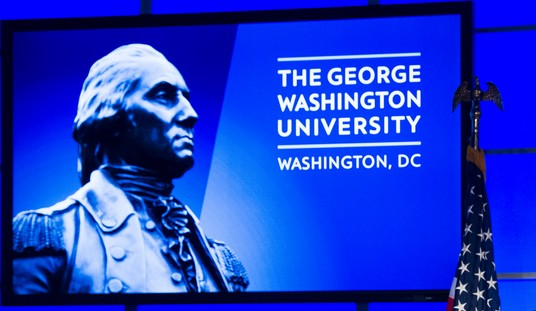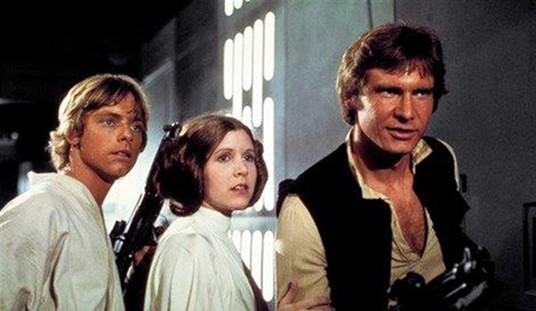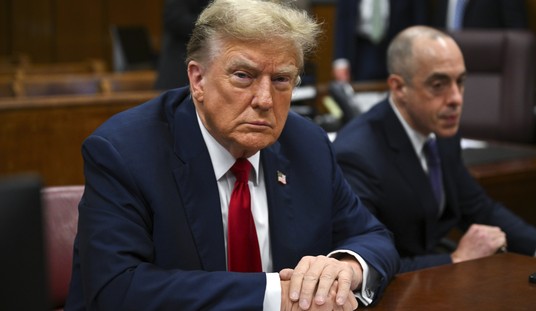Imagine that you’re trying to get a car started by pouring gas into the carburetor. A little seemed to help, but since the engine eventually stopped you add more … and more, and more. What could go wrong?
President Obama submitted the largest budget proposal in history, totaling $4.1 trillion and will pay for some of those hikes with $550 billion in tax increases, plus a $10 per barrel of oil tax designed to raise $320 billion. He’s taking his last best shot at starting the economy by pouring financial gas into the system. But one of the key experiments of its chances may have already begun in Davos, Switzerland. There, as John Maudlin writes, the governor of the Bank of Japan was persuaded by his European colleagues to extend the policy of quantitative easing into the terra incognita of negative interest rates, “and the more I think about it, the more nervous I get.”
Conspiracy theorists will love this … Kuroda emphatically tells Japanese parliament he is not considering NIRP … Kuroda flies to Davos. … Kuroda enthusiastically embraces NIRP and promises more of it if needed.
So, whom did he talk to in Davos, and what did they say to change his mind? …
Four countries in Europe are now at negative rates (see graph below). Two others are so close that it hardly makes a difference. The Federal Reserve and the Bank of England are both at 0.5%.
What they probably told him was that negative interest was the last chance saloon for the system. The Fed is itself slowly tending that way. “For the first time ever, the governing agency and U.S. central bank is requiring banks to include, in a round of stress tests commencing this year, to prepare for the possibility of negatively yielding Treasury rates. The scenario is purely hypothetical and not a forecast, according to a Jan. 28 Fed news release.”
The world’s central bankers, desperate to avoid deflation, have gone as far as they can with quantitative easing. Now they are turning to negative interest which could theoretically flush money out from banks. As Claire Jones of the Financial Times put it: “Negative deposit rates are supposed to complement QE by forcing banks to seek out riskier lending opportunities and assets to compensate for losses on their interest rate margin.” That’s the theory at least, as Investopedia explains.
During deflationary periods, people and businesses hoard money instead of spending and investing. The result is a collapse in aggregate demand which leads to prices falling even farther, a slowdown or halt in real production and output, and an increase in unemployment. A loose or expansionary monetary policy is usually employed to deal with such economic stagnation. However, if deflationary forces are strong enough, simply cutting the central bank’s interest rate to zero may not be sufficient to stimulate borrowing and lending.
A negative interest rate means the central bank and perhaps private banks will charge negative interest: instead of receiving money on deposits, depositors must pay regularly to keep their money with the bank. This is intended to incentivize banks to lend money more freely and businesses and individuals to invest, lend, and spend money rather than pay a fee to keep it safe.
Nobody knows if it will actually work. But QE was reaching the end of its road. The Fed was already getting nervous over printing money and tried to quit last year. However, the world financial system got the DTs and soon resorted to opening the verboten bottle of NIRP in the cabinet of last resort. “The Fed must be pretty unhappy about hiking rates in December now: they inflated the mother of all bubbles and have just stuck a pin in it.” The result is they’ve fallen off the wagon — and what the hell — give me a drink.
One of the side effects of NIRP — besides crashing Japanese bank stocks — is that it may set off a currency war. But the real worry is that it might not work. Once the banksters have finished drinking the last bottle of Old Howitzer Whiskey, there might not be anything left. The economic stimuli of the last decade have a created a situation where money printed by the central banks was largely used to prop up bank balance sheets and finance government spending. But it had curiously little effect on stimulating the real economy. Things have stalled.
The danger is that NIRP will fail in the same way. “Deutsche Bank, one of the lenders worst affected by the fall in bank stocks, has argued that rather than prompting banks to take on more risk, negative rates have had the opposite effect by pushing investors into bonds at the expense of equities.” The less attractive investment becomes, the more money flees to the safe haven of government bonds. In other words, printed money may resume its shuttle between the treasury and the banks even under negative interest.
The problem is to find a way out of the trap and get the real economy working. James Haley uses Paul Krugman’s analysis, of all things, to point out why quantitative easing and its cousin, NIRP, might fail. Krugman argued that the investment and savings curves may meet below the X axis of a graph — in negative interest territory.
Avid readers of Paul Krugman’s blog know that a conceivable answer is the possibility that full-employment levels of savings and investment may only balance at negative real interest rates. This is illustrated in the diagram below, which represents the intersection of an upward sloping savings function S(YF,r) showing how full employment level of savings respond to the real interest rate, r, and a downward sloping investment function, I(r). …
Now, prior to the crisis, Ben Bernanke (then chairman of the Federal Reserve Board) warned that the global economy was suffering from a “global savings glut.” In part, this glut might result from the “forced” savings of Chinese citizens reflected, say, in large current account surpluses and foreign exchange accumulation.
Haley uses this fact to note the other curve, the investment function I(r), may hold the key. The alternative to fixing a “global savings glut” is to fix the global investment deficit. The reason money remains parked in banks — from which the NIRP is trying to flush it out — is that there aren’t enough investment opportunities around. Pressed down by excessive regulation and forced to jump through hoops, it stays inside the vault.
Haley writes: “With greater investment possibilities the investment schedule would be shifted to the right, resulting in an equilibrium with a higher, positive real interest rate.” Haley’s next paragraph is a brilliant mixture of reasoning and perverse error. He argues that ergo the government should borrow cheap money and do the investing.
This scenario is, I think, what leads some, such as Joe Stiglitz, to argue that the world suffers from a global lack of investment—for whatever reason (Keynes’ animal spirits perhaps? Or my preferred explanation pervasive uncertainty and the option value of waiting in which firms are loath to invest and households fearing for the future save, holding off on consumption). The policy recommendation in such circumstances is clear: Governments should exploit the opportunity afforded by historically low interest rates to investment in the infrastructure needed to cope with an ageing population, relieve congestion in key transportation modes, making the economy more productive, and address climate change.
Haley is half right but incidentally shows why Obama’s $4.1 trillion budget is all wrong. It is correct to say the present crisis is largely caused by government-imposed disincentives, but it is wrong to conclude that the fix is low-interest funded public transport and spending on climate change.
The problem is that the economic spark plug points are fouled — the investments won’t fire. Pouring more gas into the carb — which President Obama’s giant budget intends to do will impose more taxes, create more regulations etc. But it may simply set fire to the engine without getting the American economy off the ground.
It is no accident that the themes expounded by both Bernie Sanders and Rubio/Cruz resonate so strongly with the American voter. The Democrat base is suspicious of Wall Street and the Republican grassroots of the federal government because they are two sides of the same coin. Government and the financial industry are not enemies. They are joined at the hip.
The activist wings of both parties, like the Hindu blind men describing an elephant, both dimly apprehend the two aspects of what ails them without understanding their interdependence. For the last several decades, Western governments have tried to build their economies on the basis of borrowed state spending. It’s failed miserably so far, yet the political parties are as far as ever from putting their finger on the problem, because to do so would be to point at themselves.
While NIRP and $4.1 trillion budgets may represent the last throw of the Keynesian dice, John Maudlin warns that even failure will have no effect. Like negative interest rates itself, orthodoxy is prepared to venture into negative sanity rather than admit to error.
We often refer to the herd mentality when we talk about investors. Economic academicians and central bankers are equally prone to bovine behavior. … One of the biggest “aha” moments of my life came as I listened to David Blanchflower, former Bank of England governor (during last decade’s financial crisis), in a debate a few summers ago. … They were literally days from a total collapse. Liquidity had to be provided—and that is the one true and worthwhile purpose of central banks (but then they double down).
Blanchflower’s argument was that you could not sit in the BOE’s meetings, see how impossible the situation was, and do nothing. You had to act. … And your theory says that you need to reduce the cost of money so that people will borrow and spend. …
You have to understand that in the world of truly elite economists, everyone knows everyone. Many of them went to the same schools, and they regularly talk at conferences, in private meetings, and by phone and email. … They very well get the seriousness of our current economic predicament, but their academic theory tells them that the way to resolve that predicament is with more quantitative easing and even lower rates.
You need to understand that economists have faith in their theories in the same way that many people have faith in their religion.
And as ISIS has shown, it’s hard to refute religion. It will be double down. Bernie Sanders will continue to think he can spend without Wall Street propping him up while Hillary can promise to expand “middle class” wages without cutting government. The bankers will go from NIRP to more NIRP. One day the public will discover they’re really pulling on a loop, that tugging one end has no effect upon its length.
One day. But not today.
Follow Wretchard on Twitter
Recently purchased by readers:
The Hundred-Year Marathon: China’s Secret Strategy to Replace America as the Global Superpower, Author Michael Pillsbury, one of the U.S. government’s leading China experts, reveals the hidden strategy fueling that country’s rise – and how Americans have been seduced into helping China overtake the U.S. as the world’s leading superpower.
Those Who Hold Bastogne: The True Story of the Soldiers and Civilians Who Fought in the Biggest Battle of the Bulge, Hitler’s last gamble, the Battle of the Bulge, was intended to push the Allied invaders of Normandy all the way back to the beaches. The plan nearly succeeded, and almost certainly would have, were it not for one small Belgian town and its tenacious American defenders who held back a tenfold larger German force while awaiting the arrival of General George Patton’s mighty Third Army.
NightWatch: A Practical Guide to Viewing the Universe, NightWatch has been acclaimed as the best general interest introduction to astronomy. This latest edition’s improvements include a complete update of the equipment section, including computerized telescopes; an enlarged photography section, with how-to instructions for using the new generation of digital cameras for astronomical photography, both with and without a telescope; the tables of future solar and lunar eclipses, planetary conjunctions and planet locations, updated through 2025; star charts for use in the southern hemisphere; and new photographs showing the latest thrilling discoveries made by current space observatories and probes.
A Hobbit, a Wardrobe, and a Great War: How J.R.R. Tolkien and C.S. Lewis Rediscovered Faith, Friendship, and Heroism in the Cataclysm of 1914-18 , The untold story of how the First World War shaped the lives, faith, and writings of J. R. R. Tolkien and C. S. Lewis.
Recommended:
Amazon Echo, Echo connects to Alexa, a cloud-based voice service, to provide information, answer questions, play music, read audiobooks and the news, check sports scores or the weather, and more — instantly. All you have to do is ask. It is designed around your voice, it’s hands-free and always on. With seven microphones and beam forming technology, Echo can hear you from across the room — even while music is playing. Over 100 new features and skills have been added since launch, including Domino’s, Spotify and Uber.
Did you know that you can purchase some of these books and pamphlets by Richard Fernandez and share them with your friends? They will receive a link in their email and it will automatically give them access to a Kindle reader on their smartphone, computer or even as a web-readable document.
The War of the Words, Understanding the crisis of the early 21st century in terms of information corruption in the financial, security and political spheres
Rebranding Christianity, or why the truth shall make you free
The Three Conjectures, reflections on terrorism and the nuclear age
Storming the Castle, why government should get small
No Way In at Amazon Kindle. Fiction. A flight into peril, flashbacks to underground action.
Storm Over the South China Sea, how China is restarting history in the Pacific
Tip Jar or Subscribe or Unsubscribe to the Belmont Club









Join the conversation as a VIP Member